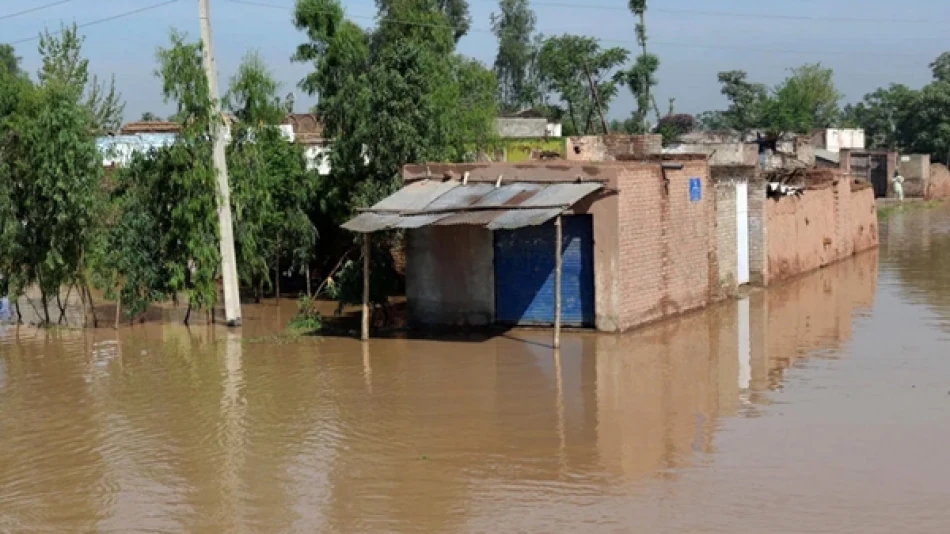
Pakistan's Monsoon Season Leaves Devastating Toll: Over 400 Lives Lost
Pakistan's Monsoon Death Toll Climbs to 706 as Climate Crisis Deepens Regional Vulnerability
Pakistan's devastating monsoon season has claimed at least 706 lives since late June, with 393 deaths recorded in just the past five days alone, highlighting the country's growing vulnerability to extreme weather events linked to climate change. The mountainous Khyber Pakhtunkhwa province, bordering Afghanistan, has borne the brunt of the disaster with 356 fatalities as rescue operations continue to extract survivors from collapsed structures.
A Pattern of Escalating Monsoon Violence
The current monsoon season, which began on June 26 and is expected to continue until mid-September, represents a stark reminder of Pakistan's precarious position on the frontlines of climate change. The country consistently ranks among the world's most climate-vulnerable nations, despite contributing less than 1% of global greenhouse gas emissions.
This year's death toll already surpasses many previous seasons, with the northwestern region bearing disproportionate casualties. Khyber Pakhtunkhwa's mountainous terrain, combined with inadequate infrastructure and dense populations in flood-prone areas, creates a perfect storm for monsoon-related disasters.
Economic and Infrastructure Implications
Agricultural Devastation
Pakistan's economy, heavily dependent on agriculture, faces severe disruption as monsoon floods typically destroy crops, livestock, and farming infrastructure. The timing coincides with critical growing seasons for cotton and rice, two of Pakistan's major export commodities, potentially impacting global supply chains already strained by geopolitical tensions.
Infrastructure Vulnerability Exposed
The ongoing rescue operations underscore Pakistan's infrastructure deficit, particularly in rural and mountainous regions. Poor construction standards, inadequate drainage systems, and limited early warning capabilities amplify the impact of natural disasters, creating cascading economic losses that extend far beyond immediate casualties.
Regional Climate Context
Pakistan's monsoon crisis reflects broader South Asian climate trends. The region has experienced increasingly erratic precipitation patterns, with more intense rainfall concentrated in shorter periods. This phenomenon, linked to rising global temperatures, mirrors similar challenges faced by neighboring India and Bangladesh.
The 2022 floods, which submerged one-third of Pakistan and affected 33 million people, demonstrated the country's extreme vulnerability. International climate experts have warned that such "super floods" may become more frequent, requiring fundamental shifts in disaster preparedness and urban planning.
Government Response and International Implications
Pakistan's disaster management capabilities remain stretched, with the National Disaster Management Authority coordinating rescue efforts across multiple provinces simultaneously. The country's ongoing economic crisis, marked by depleted foreign reserves and International Monetary Fund bailout negotiations, limits its capacity for comprehensive disaster response and long-term resilience building.
The international community faces mounting pressure to address climate adaptation financing for vulnerable nations like Pakistan. The country's repeated climate disasters have become a rallying point for loss and damage compensation debates at global climate summits, with developing nations arguing that wealthy countries must bear greater responsibility for climate impacts.
Looking Ahead: September's Critical Weeks
With the monsoon season extending until mid-September, Pakistan faces several more weeks of potential devastation. Meteorological forecasts suggest continued heavy rainfall across northern and central regions, raising concerns about additional casualties and infrastructure damage.
The current crisis will likely intensify debates about Pakistan's long-term climate adaptation strategy, including controversial proposals for managed retreat from high-risk areas and massive infrastructure investments the cash-strapped nation can ill afford. As rescue operations continue in Khyber Pakhtunkhwa, the mounting death toll serves as a stark reminder that climate change's human cost is being paid disproportionately by the world's most vulnerable populations.
Most Viewed News

 Layla Al Mansoori
Layla Al Mansoori






